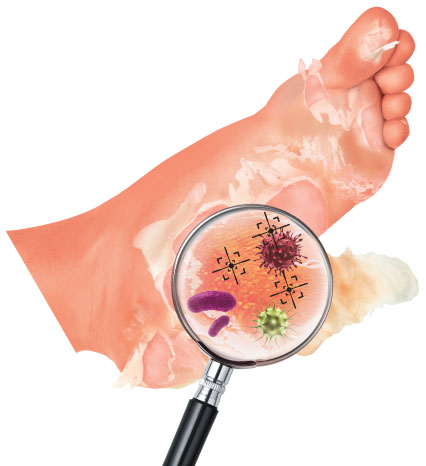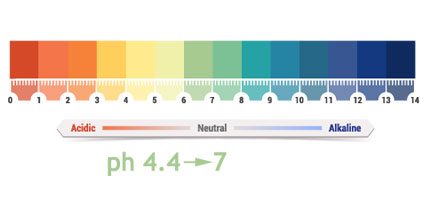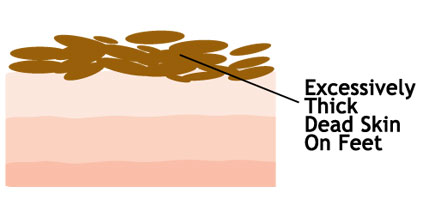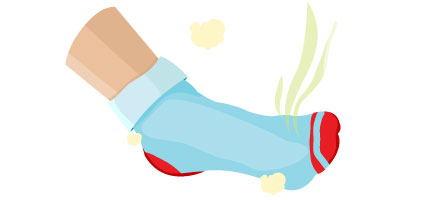Home > Foot Odor
Home > Foot Odor

Foot odour can happen to anyone. If you do not want to intoxicate the room and embarrass yourself as soon as you take off your shoes, you must understand the causes of foot odour and work hard to prevent it. There are physiological and pathological reasons for foot odour.
Overweight and excessive exercising can both lead to too much sweating on the foot. Adding frequent use of unbreathable rubber shoes and nylon socks and inadequate hygiene, sweat on the foot can easily become the best breeding ground for bacteria, resulting in physiological foot odour.



There are two main causes for pathological foot odour. First of all, it could be an extension from an overlooked physiological foot odour condition; secondly, it could be caused by an infectious disease. For example, the foot can be infected by bacteria from venues such as a contaminated shower, the flooring on the pool side, bath towels, communal slippers, footbaths, etc.

The ball-of-foot is a major sweat-releasing part of the body. The average foot contains more than 600 sweat glands per square centimetre, which is two to four times more than other body parts. There are over 250,000 sweat glands in this part of the body that release close to 500 ml of sweat every day. In addition to water and salt, sweat also comprises lactic acid and urea. When the level of water contents is high, it offers a highly favourable environment for the growth of bacteria and fungus.

Wearing shoes without socks keeps sweat on the foot surface; shoes that are too tight and unbreathable do not only promote sweating, but also contribute to the changes on the pH value on the surface of the skin – shooting from the original pH 4.4 to about pH 7. Carbon dioxide will also release over the course, creating a favourable environment for bacterial growth, which results in odour.

The surface of the foot is constantly covered in bacteria, which can decompose the keratin on the skin surface and the urea and lactic acids from the sweat released by the foot. These will form a variety of smelly metabolic wastes. Such wastes bear a similar smell to fermenting yoghurt. When the bacteria-covered feet are wrapped in unbreathable socks, unpleasant foot odour would gradually form.

Excessively thick build-up of the dead skin layer, when moisturised by sweat, can turn into a nutrient source for various types of smelly bacteria, which develop into foot diseases and promote bacteria growth to worsen the foot odour condition. In addition to washing your feet regularly and make frequent changes in shoes and socks, you must also pay special attention to the cleaning and caring of the epidermis to reduce the chance for sweat to crosslink with dead skin.

A hot and damp environment, which is unique to Hong Kong’s climate, offers favourable conditions for fungus growth. When the foot is infected by fungus, “tinea pedis”, more commonly known as “athlete’s foot”, will occur. The symptoms of the athlete’s foot come in a diverse variety. Not all athlete’s foot sufferers are involved with unpleasant odour. The condition that is most prone to create foot odour belongs to the type in which the infection begins between the toes. In serious cases of athlete’s foot, the skin would fester and becomes itchy; there is intense foot odour in this situation.

Excessively thick build-up of the dead skin layer, when moisturised by sweat, can turn into a nutrient source for various types of smelly bacteria, which develop into foot diseases and promote bacteria growth to worsen the foot odour condition. In addition to washing your feet regularly and make frequent changes in shoes and socks, you must also pay special attention to the cleaning and caring of the epidermis to reduce the chance for sweat to crosslink with dead skin.

A hot and damp environment, which is unique to Hong Kong’s climate, offers favourable conditions for fungus growth. When the foot is infected by fungus, “tinea pedis”, more commonly known as “athlete’s foot”, will occur. The symptoms of the athlete’s foot come in a diverse variety. Not all athlete’s foot sufferers are involved with unpleasant odour. The condition that is most prone to create foot odour belongs to the type in which the infection begins between the toes. In serious cases of athlete’s foot, the skin would fester and becomes itchy; there is intense foot odour in this situation.

The ball-of-foot is a major sweat-releasing part of the body. The average foot contains more than 600 sweat glands per square centimetre, which is two to four times more than other body parts. There are over 250,000 sweat glands in this part of the body that release close to 500 ml of sweat every day. In addition to water and salt, sweat also comprises lactic acid and urea. When the level of water contents is high, it offers a highly favourable environment for the growth of bacteria and fungus.

Wearing shoes without socks keeps sweat on the foot surface; shoes that are too tight and unbreathable do not only promote sweating, but also contribute to the changes on the pH value on the surface of the skin – shooting from the original pH 4.4 to about pH 7. Carbon dioxide will also release over the course, creating a favourable environment for bacterial growth, which results in odour.

The surface of the foot is constantly covered in bacteria, which can decompose the keratin on the skin surface and the urea and lactic acids from the sweat released by the foot. These will form a variety of smelly metabolic wastes. Such wastes bear a similar smell to fermenting yoghurt. When the bacteria-covered feet are wrapped in unbreathable socks, unpleasant foot odour would gradually form.
© Copyright 2020 – BioHealth Plus Limited